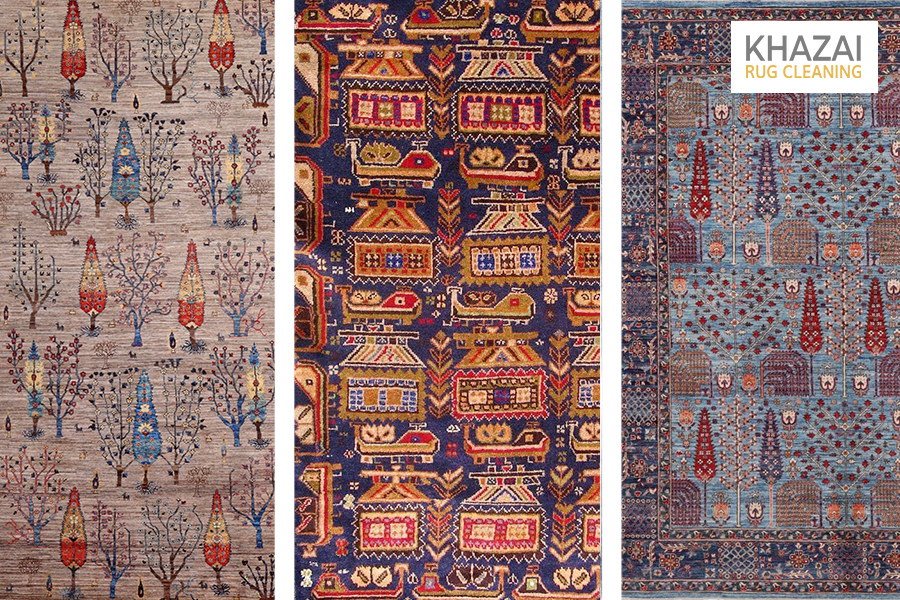Is Taliban’s Seizing Power The End of Afghanistan’s Rug Industry?
“It may be unfair, but what happens in a few days, sometimes even a single day, can change the course of a whole lifetime…”
― Khaled Hosseini, The Afghan-American Novelist
Afghanistan’s Rug Industry, Do you recall Afghanistan with war, bombs, and bad news? You most probably have heard of the war going on in that country on media. But rarely anybody acknowledges the handmade game of this land: The Afghan rugs.
Despite the bad news about Afghanistan that seems to be never-ending, this land has the blessing of fascinating art and culture that has grown like a pearl inside the shell of the Hindukush mountains.
This blog takes a look at the story of Afghan rugs and discusses how the return of the Taliban affects these world-renown works of art.
The Story of Afghanistan’s Rug Industry Weavers
Imagine living in the 2nd worst country for women ruled by fundamental Islamists. In a country with a 20-year-old bleeding scar on its face, where women are not allowed to leave the house without being escorted by a male member of the family. Nearly %37 of the women are illiterate and forced to marry before reaching adulthood. On average, 10 people die from terrorist attacks every single day. No music, no dancing, no cinema, no TV, and even flying kites is against the law.
Rug weaving is the only thing Afghan women, especially in far remote villages, can do for a living. It doesn’t need going out of the house to get into trouble with Taliban agents and doesn’t need advanced tools and material. All you need is fine wool, vegetable dyes, and a beautiful mind to bring an imaginary scene to life on knotted threads.
During the unimaginable recession in Afghanistan and the restrictions for Afghan women, rug weaving means to be or not to be for female-headed households.
Now that Afghanistan has lost ties with almost the whole world because of the Taliban, the future for exporting rugs from this country is quite blurred.Afghanistan’s Rug Industry
The Story of Afghanistan’s Rug Industry
In such ghastly conditions, you might not expect art to thrive. But that’s because you’re underestimating the flourishing nature of art. Afghan rugs come from the remote villages of Afghanistan, where there’s no sign of modernity and the government. Literally, everything depends on livestock and land, including food, clothes, and rugs.
Handmade rugs have always been one of the most prominent embodiments of art in the east. The local weavers produce rugs with vastly available materials and can simply outlive their creator. Those artworks remain as living proof of how the rug artisans perceived the world — a hand-knotted photograph or painting.
The difference in the patterns of rugs comes from the different stories of their weavers. When the weaver lives in a calm and soothing environment, floral patterns with animals dancing around it appear on the rug. When the weaver’s homeland is in war, hunting scenes and battlefields become their choice of rug pattern.
For example, you can see guns, tanks, and warplanes on some kilims and rugs coming from Afghanistan after frustration from civil wars for 20 years.
The Story of David’s Rug Store in Louisville KY
That phrase “family business” doesn’t just indicate that his Rug Store in Louisville, KY, is founded and run by a family; it means a close-tie network of rug artisans collaborating like members of a family.
Most Oriental rugs in David’s rug store are made by female rug artisans in developing countries. In those regions, rug weaving might be the only way to survive for the women facing many challenges to enter society.
Among all, Afghan women had a spectacular place in David’s heart because of their mesmerizing and best-selling Afghan rugs. These rugs are like open books. They reflect the stories that Afghan women want to share by hand-knotting colorful wool and silk threads.
With the Taliban regaining power in Afghanistan, David is deeply concerned about his rug weaver sisters there. Will she manage to keep in touch with them? Will they still be able to support their families by rug weaving? Can David still bring their excellent Afghan rugs to his store? These are the questions that David hopes to find a “Yes” to.



